














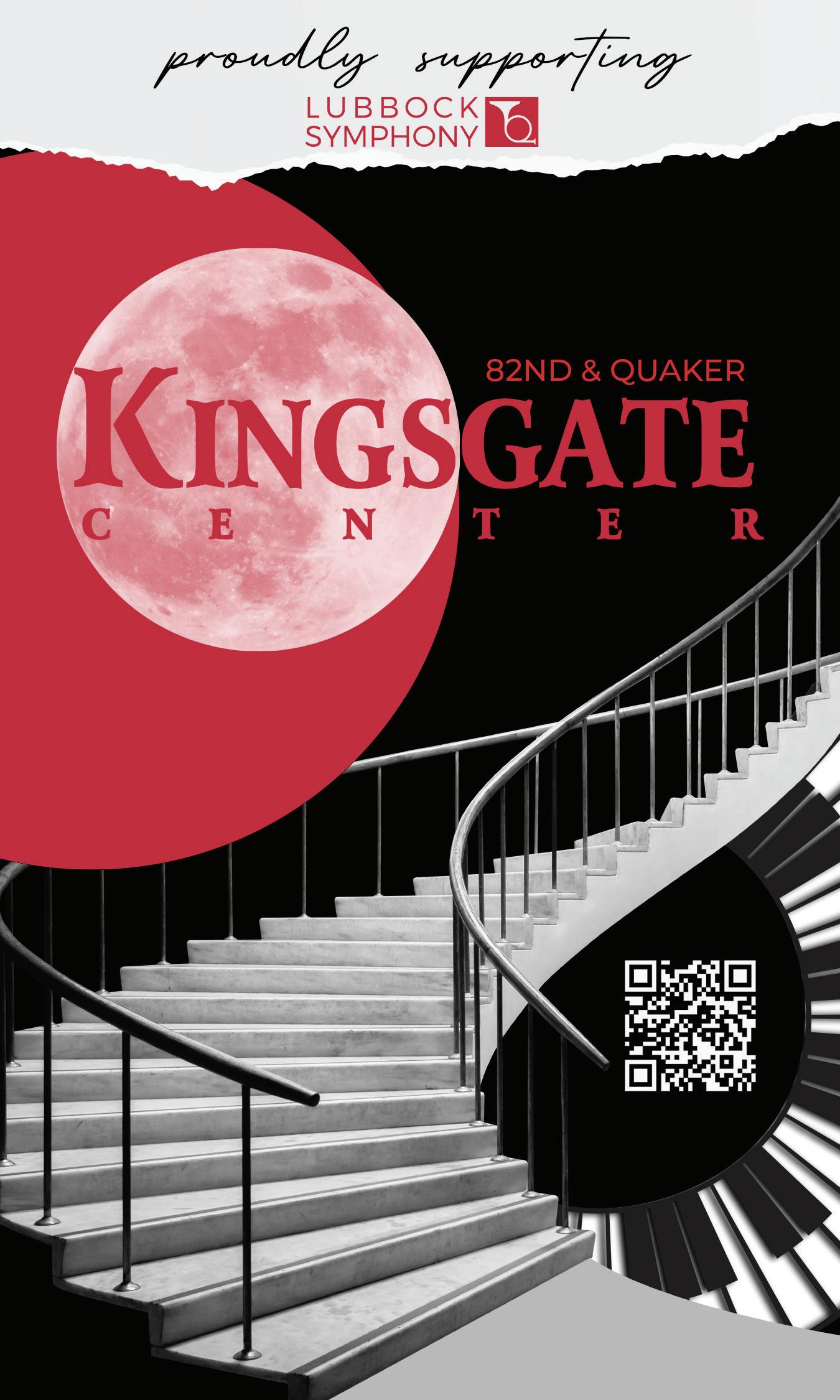
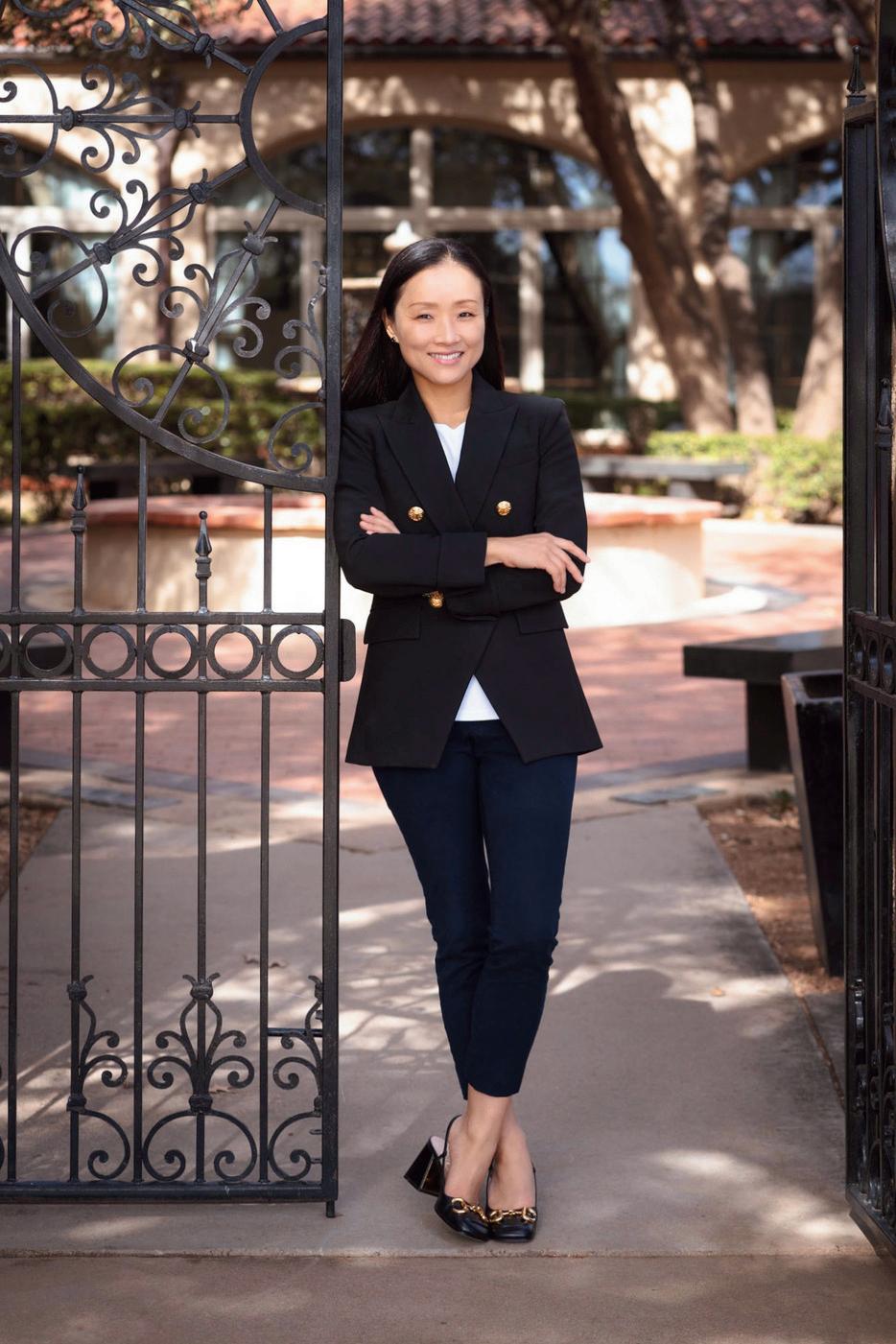




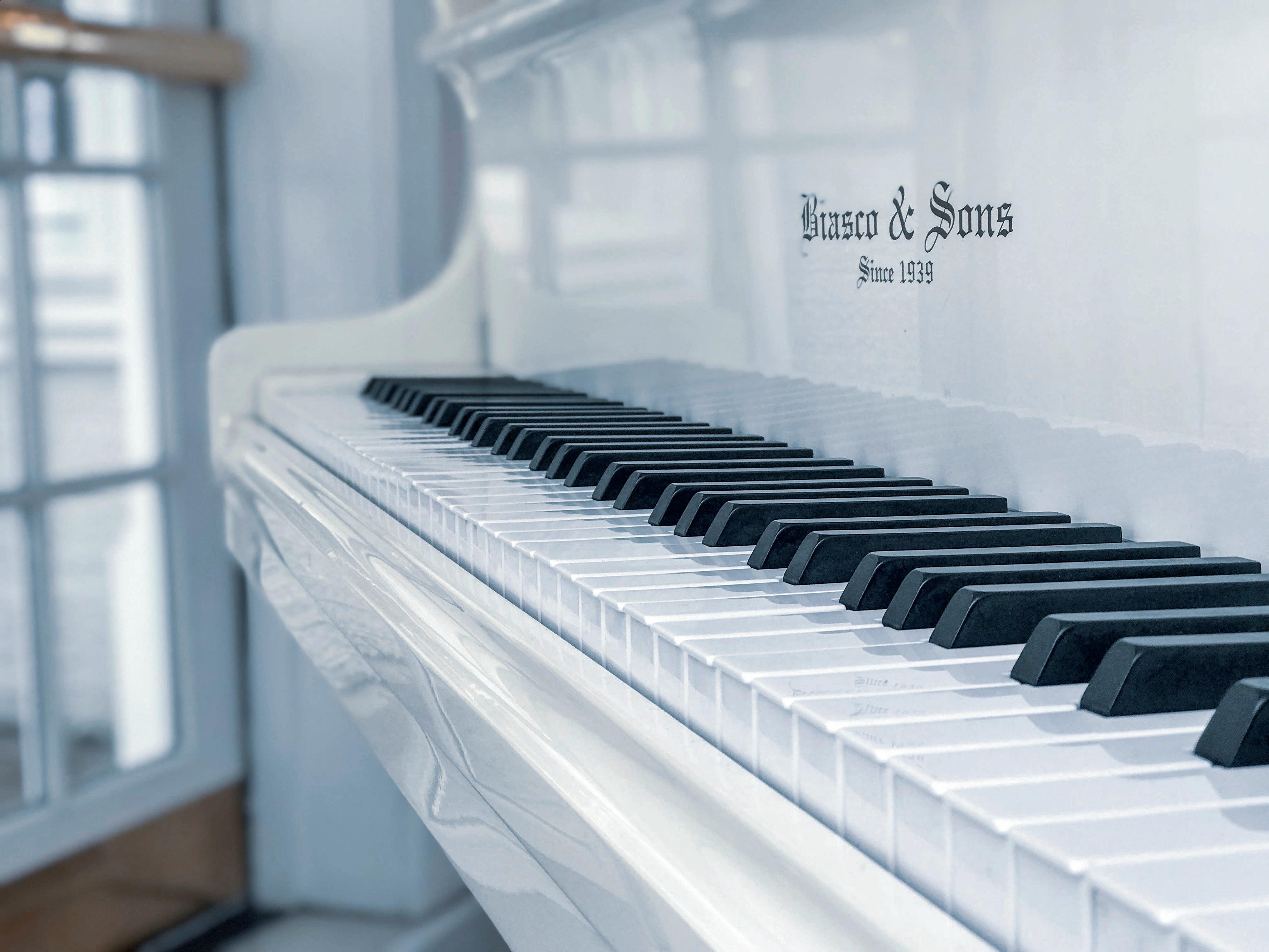




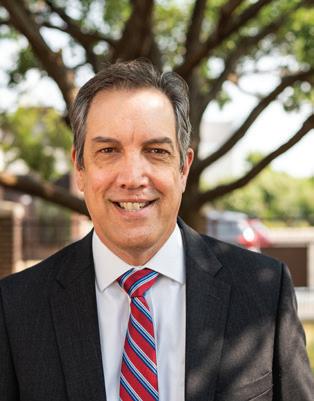
Dear Friends of the Lubbock Symphony,
On behalf of the Board of Directors, musicians, and staff of Lubbock Symphony, it is my pleasure to welcome you to The Buddy Holly Hall of Performing Arts and Sciences for tonight’s performance.
We extend our deepest gratitude to guest conductor Peter Bay, who has traveled from Austin to lead us with his remarkable artistry, and guest pianist Jon Kimura Parker, whose extraordinary virtuosity and passion will bring the Tchaikovsky Piano Concerto to life. It is an honor to welcome them both to the Lubbock stage.
A special thank you to City Bank for its unwavering commitment to the arts. Its dedication to enriching our community through music is evident tonight as we showcase spectacular talent.
Additionally, we would like to express our sincere appreciation to Helen Kim-Sills and Classical 105.7 for their partnership in producing the Sizzle Reel that you will see tonight. This special video feature, showcasing Clint Barrick, Brad Green, Richard Fountain, and David Cho, offers unique insights into the brilliance of Mendelssohn, Nielsen, and Tchaikovsky.
Please enjoy Tchaikovsky’s First Piano Concerto and we look forward to seeing you at Carmina Burana in April.
Sincerely,

Galen Wixson President & CEO Lubbock Symphony






Dear Friends of the Lubbock Symphony,
We are thrilled to welcome guest conductor Peter Bay who has been hailed as a Maestro who “really knows the score inside and out for every work that he conducts and the interpretations of the works he conducts are based on scholarship and honest study”. Maestro Bay has just celebrated a silver anniversary of his music directorship at the Austin Symphony. His dedication and energy has brought passion and joy to the musicians and the audiences worldwide.
It is also a great honor to welcome guest pianist Jon Kimura Parker who has mastered all the works written for piano and orchestra. He has recently been featured as guest lecturer at ToneBase Piano; an online masterclass for aspiring pianists.
As the Gold Medalist at the 1984 Leeds International Piano Competition, he has performed with every major orchestras. He is the Artistic Director at the Honens International Piano Competition and is currently a master teacher and professor at the Shepherd School of Music at Rice University.
Tonight’s program has a theme; Musical Gifts. Mendelssohn, upon hearing his colleague’s opera “Melusina”, was inspired to write a thank you note by writing this beloved concert overture. The first half of tonight’s program will conclude with a Danish composer Carl Nielsen’s Symphony No. 1. It is a youthful work inspired by Beethoven Symphony No. 5. He dedicated this exciting work to his wife.
The finale of the program is none other than Tchaikovsky’s illustrious and beloved first piano concerto. It was dedicated to the esteemed pianist and the dean of the Moscow Conservatory Nicolai Rubinstein. The initial reception from Rubinstein was less than lukewarm to say the least. Tchaikovsky did not give up and presented to another titan Hans von Bülow who enthusiastically approved it as one of the war horses that will take the piano world by storm. To this day, Tchaikovsky’s first piano concerto has garnered appreciation from players and audiences.
Thank you for your support for tonight’s Lubbock Symphony Masterworks program. Your presence and attention is greatly appreciated.
Most sincerely,
David Cho Music Director Lubbock Symphony





You love Bach in black tie, but have you tried Sibelus in slippers? Beethoven à la bubble bath? Dvořák with your favorite doggo?
Locally-curated classical content is now available via voice command— wherever you are. Just tell your smart device to play KTTZ-HD2, and start that soaker!


IN HONOR OF
Founding Conductor of the Lubbock Symphony Orchestra
1946-1987








Peter Bay has been the Music Director and Conductor of the Austin Symphony Orchestra since 1998. He also serves as the Conductor of the Bravo! Big Sky Classical Festival Orchestra (MT) and the Arizona Philharmonic.
Bay has conducted over 80 orchestras, including the National, Chicago, St. Louis, Houston, Dallas, Baltimore, New Jersey, North Carolina, San Antonio, Tucson, West Virginia, Colorado, Hawaii, Sarasota, and Fort Worth symphonies. Internationally, he has led the Bochum (Germany), Carinthian (Austria), Lithuanian National, and Ecuador National symphonies, the Minnesota and Algarve (Portugal) orchestras, and the Louisiana, Buffalo, Arizona, Rhode Island, and Boca del Rio (Mexico) philharmonics. His opera and chamber engagements include the St. Paul Chamber Orchestra, Theater Chamber Players of the Kennedy Center, and performances at Eastman and Aspen opera theaters. He has appeared at festivals such as Aspen, Grant Park, Ravinia, Round Top, OK Mozart, Music in the Mountains, and Skaneateles. In 2018, he conducted Bernstein’s Mass for the Bernstein100Austin celebration.
In addition to his symphonic work, Bay is the primary conductor for Ballet Austin. His Austin Opera credits include A Streetcar Named Desire, La Traviata, Turandot, The Marriage of Figaro, and La Bohème.
Previously, Bay served as Music Director of the Erie Philharmonic, Annapolis Symphony Orchestra, Breckenridge Music Festival, Britt Festival Orchestra, and Hot Springs Music Festival. He has also held positions with the Rochester Philharmonic, St. Paul Chamber Orchestra, and Richmond Symphony. From 1980 to 1990, he was on the conducting staff of the Aspen Music Festival, leading concerts with four of its orchestras.
His recordings include a critically acclaimed Bridge Records release of Edward Burlingame Hill’s music with the Austin Symphony and pianist Anton Nel, the U.S. premiere of Britten’s The Sword in the Stone with the Richmond Symphony, and Voices with the Rochester Philharmonic. He also conducted Christopher Cross’ Secret Ladder album and Hanan Townshend’s soundtrack for the 2016 film The Vessel.
In 1994, Bay was one of two conductors selected for the Leonard Bernstein American Conductors Program. He won first prize at the 1980 Baltimore Symphony Young Conductors Competition and was a prizewinner at the 1987 Leopold Stokowski Competition. In 2012, he was featured in Solo Symphony, a choreographic work by Allison Orr, and was inducted into the Austin Arts Hall of Fame in 2016.
Bay is married to soprano Mela Sarajane Dailey, and they have a son, Colin.



Pianist Jon Kimura Parker is celebrated for his charisma, enthusiasm, and dynamic performances. A veteran of the international concert stage, he has performed in renowned venues such as the Berlin Philharmonie, Carnegie Hall, London’s South Bank, the Sydney Opera House, and the Beijing Concert Hall. He is the Creative Partner of the Minnesota Orchestra, Artistic Director of the Honens International Piano Competition, and Artistic Advisor for the Orcas Island Chamber Music Festival.
Highlights of his 2021-22 season include concerto appearances with the Phoenix, Peninsula, San Antonio, Rhode Island, and Kansas City orchestras, a special performance with the Galilee Chamber Orchestra in Toronto, and recitals for Portland Piano International and the Chamber Music Society of Lincoln Center. He also tours as a member of the Montrose Trio, alongside Martin Beaver and Clive Greensmith.
A versatile collaborator, Parker has performed with Doc Severinsen, Audra McDonald, Bobby McFerrin, Pablo Ziegler, and Sanjaya Malakar. He was a founding member of Off the Score, performing with Stewart Copeland of The Police and arranging works by Prokofiev, Ravel, and Stravinsky. He has also accompanied Frederica von Stade, Susan Graham, and Luca Pisaroni in recital.
A dedicated educator, Parker is a Professor of Piano at the Shepherd School of Music at Rice University. His students have won major international competitions and performed worldwide. He has lectured at The Juilliard School, given master classes at Yale, and chaired the jury for the Hilton Head International Piano Competition.
Parker’s discography includes a dozen albums, covering composers from Mozart and Chopin to Barber, Stravinsky, and John Adams. His most recent recording, Fantasy, built around Hirtz’s Wizard of Oz Fantasy, was praised for its artistic depth. His Concerto Chat YouTube series explores the piano concerto repertoire, while his Whole Notes performances are available on Amazon Prime Video. He is currently recording master classes for Tonebase.
Winner of the Gold Medal at the 1984 Leeds International Piano Competition, Parker studied with Edward and Keiko Parker, Lee Kum-Sing, Marek Jablonski, and Adele Marcus at The Juilliard School. An Officer of The Order of Canada, he holds honorary doctorates from the University of British Columbia and the Royal Conservatory of Music, Toronto.
Known to friends as “Jackie,” Parker is married to violinist/violist Aloysia Friedmann. Their daughter Sophie graduated from Rice University in 2021.



Peter Bay
The CH Foundation Endowed
Conductor’s Podium
Annie Chalex Boyle
Concertmaster
Jones-Saathoff Family
Endowed Chair
Linda Lin
Associate Concertmaster
Diekemper Family Foundation
Endowed Chair
Maja Maklakiewicz
Assistant Concertmaster
Lazaro Gonzalez
Adan Flores
Shawn Earthman
TTU School of Music
Endowed Performer Chair
Radman Rasti
Kea Beasley
Anna Kim
Savanna Sharp
Evgeny Zvonnikov
Principal
Justice Phil and Carla Johnson
Endowed Chair
Saikat Karmakar
Assistant Principal
Cassidy Forehand
Carroll Jane Goodyear
James Ellis
Shirley Wigley
Brennan Lowrey
Martha Perez
Sean Kyhm
Israel Mello
Principal
Mary M. Epps and Ralph E.
Wallingford Endowed Chair
Sharon Mirll
Sera Jung
Bruno Silva
Vivian McDermott
Jasmin Caldera
Josh Allen
Michael Newton
Principal
Mary Francis Carter Endowed Chair
Danny Mar
Alejos Anaya
Madeline Garcia
Daria Mi ś kiewicz
Justin Barnwell
Jeremy Couture
Mark Morton
Principal
Eugene and Covar Dabezies
Endowed Chair
Hannah Macgillivray
Stuart Anderson
Christopher Arcy
Nodier Garcia
Aubrey Johnson

Eric Leise Principal
Crew of Columbia, STS-107
Endowed Chair
Antonio Herbert
Spencer Hartman
Spencer Hartman
Susetta Rockett
Principal
Lubbock Symphony Guild
Endowed Chair
Jordan Hastings
David Shea Principal
Christine Polvado and John
Stockdale Endowed Chair
Trisha Burrell
Vince Ocampo
Principal
Nancy and Tom Neal
Endowed Chair
Ian Resurreccion
Quentin Fisher
Principal
Anthony and Helen Brittin
Endowed Chair
Esteban Chavez
Clark Hutchinson
Jack Mellinger
Seth Wallace
Gary Hudson Principal
Stacey and Robert Kollman
Family Endowed Chair
William Takacs
Bruce Keeling
Principal
Larry and Lucy Landusky
Endowed Chair
Jacob Moore
Darin Cash
Tim and Mary Jane Sampson
Endowed Chair
Lisa Rogers Principal
Lubbock Symphony Guild
Endowed Chair
Gary Hudson
Israel Mello



A Symphony inspires, educates & captivates us all.



PROUD SUPPORTER OF

Felix Mendelssohn (1809-1847)
The Fair Melusina Overture, op. 32
Carl Nielsen (1865-1931)
Symphony No. 1 in G minor, op. 7
I. Allegro orgoglioso
II. Andante
III. Allegro comodo - Andante sostenuto - Tempo I
IV. Finale: Allegro con fuoco
Piotr Ilyich Tchaikovsky (1840-1893)
Piano Concerto No. 1 in Bb minor, op. 23
I. Allegro
II. Andantino
III. Allegro
Jon Kimura Parker, piano
The length of this program is approximately 1 hour and 40 minutes.


THIS PROGRAM IS MADE POSSIBLE IN PART THROUGH A GRANT FROM THE CITY OF LUBBOCK, AS RECOMMENDED BY CIVIC LUBBOCK, INC.







Written by Dr. David Cole
Felix Mendelssohn: Overture to The Fair Melusina, Op. 32
Felix Mendelssohn fell in love with fairy tales and legends from an early age. His overture to Shakespeare’s A Midsummer Night’s Dream so perfectly evokes the enchanted realm of Oberon, Titania, and Puck, it seems impossible that the work was written by a 16-year-old. That love of Shakespeare came from the nurturing of reading and study in the Mendelssohn household where he and his sister Fanny read, acted, and set to music poetry and drama by Shakespeare and many other writers.
Mendelssohn and his family undoubtedly knew the legend of the water nymph Melusina, who agrees to marry a human mortal on the condition that he never see her bathing or giving birth – a story akin to Hans Christian Andersen’s The Little Mermaid. Goethe had set the legend as part of a novel and 1807, and a dramatized version of Goethe’s text was offered as a libretto to Beethoven, who turned it down.
Near his 25th birthday, Mendelssohn attended a performance of the opera Melusina by Conradin Kreutzer. Mendelssohn was underwhelmed by Kreutzer’s treatment of the legend and undertook to write an overture on the subject to demonstrate his own ideas on an effective musical representation. Mendelssohn worked on the overture through 1833, intending it as a birthday gift for his sister Fanny. The London premiere was less successful than Mendelssohn had hoped for, so he revised it and published it in 1835.
As in his evocative Hebrides Overture, in The Fair Melusina, Mendelssohn manages to suggest the watery realms of Melusina’s legend without slavishly following the plot of the legend in music. While the burbling clarinets and strings of the introduction might suggest the mermaid herself, the stormy Allegro that follows is in a Classical sonata form and a contrasting lyrical string melody as a second theme. Yet it seems to be Melusina who has the final word as she evaporates in a final cascade of gentle woodwind and string arpeggios.
Carl Nielsen: Symphony No. 1 in G minor, Op. 7
When a symphony is given its first performance, if the composer is in the audience, it’s traditional for the conductor to acknowledge him and bring him to the stage for a bow and to bask in the appreciation of the audience. In some cases, composers will conduct their own new works and receive kudos (or catcalls) from the podium. Concert patrons in Copenhagen attending the concert of the Chapel Royal Orchestra on the evening of March 14, 1894 might have been surprised when, at the conclusion of Carl Nielsen’s First Symphony, conductor Johann Svendsen gestured towards the orchestra’s second violin section and the 27-year-old composer arose, violin in hand, to accept the enthusiastic approval of the audience and his colleagues in the orchestra. This premiere of Nielsen’s Symphony No. 1 was the first step on a distinguished journey for the composer that would produce five more symphonies that spoke with a distinctive voice in a century where composers questioned the validity of writing symphonies at all. From his humble origins, Nielsen would eventually be hailed as Denmark’s foremost composer - a title he retains to this day, nearly a century after his death.

Nielsen was born in Odense on the Danish island of Funen, the seventh of twelve children. He received his earliest musical training from his parents. He described his first experiences in music like this:
I had heard music before, heard father play the violin and cornet, heard mother singing, and, when in bed with the measles, I had tried myself out on the little violin.
After some formal training in violin and piano, he became a junior member of a military band at age 14, playing trumpet and alto trombone. He continued to play the violin for dances and gatherings while on leave at home. He left the regiment upon acceptance by Copenhagen’s Royal Academy, where he studied violin, music theory, and composition.
After graduating from the Academy in 1886, Nielsen began his career as a freelance musician. It was during this period that his first compositions (mostly chamber music) were given their first performances. His Little Suite for string orchestra was favorably received at a concert at Copenhagen’s famed Tivoli Gardens. It was published as the composer’s Opus 1. After joining the second violin section of the Royal Danish Orchestra, Nielsen gained exposure to the orchestral repertoire of both past and present, which planted the seeds that grew into his Symphony No. 1.
Born into a century where the primary musical debates were between supporters of Brahms (the more “Classical” romanticism of Schubert, Schumann, and Mendelssohn) and the supporters of Wagner (the “radical” innovations of Berlioz and Liszt), Nielsen, like many 20th-century composers, chose a different path. Instead of either slavish devotion to the past or an unquestioning embrace of the contemporary, Nielsen melded both traditional forms and contemporary harmony to create a distinctive musical voice. It’s tempting to see Nielsen’s music as an aural predecessor of Danish Modern design, with the clear vision of his music as an equivalent of the clean lines and unfussy elegance of the later Scandinavian aesthetic.
Nielsen greatly admired Beethoven’s Fifth Symphony and its journey from darkness into light. In his own music, Nielsen adapted this principle into the idea of progressive tonality, the structural device of beginning a piece of music in one key and concluding in another key, giving the work a harmonic “goal” to which it strives from the beginning to the end of the work. As in Beethoven’s Fifth, where each of the first three movements contain harmonic “hints” of the triumphant C major of the finale, in Nielsen’s symphonies there are glimpses of the key that will ultimately conclude the work. Nielsen’s First Symphony is one of his earliest manifestations of this principle, beginning in a stormy G minor and concluding in radiant C major.
The symphony opens with a surge of energy, as though we’ve suddenly opened the door upon a musical discourse that was already taking place. Nielsen’s unusual tempo marking (Allegro orgoglioso, a “proud liveliness”) reflects a composer first starting to stretch his musical muscles and wanting to proudly assert himself to both the orchestra and the audience. The bold, striding opening theme leads to an outpouring of lyricism that hovers between yearning and disquiet. Even in its calmer interludes, this opening movement never strays far from the tumultuous energy with which it began. Throughout, Nielsen masterfully manipulates his musical material to present each melodic idea in a variety of moods and colors. The final bars rachet the energy up another notch, plunging headlong to the final cadence, which closes the movement like the sudden slamming of a door at the end of a contentious argument.
Strings introduce a quiet hymn to open the second movement (Andante), which soon develops into a more passionate lyrical outpouring. The music rises and falls in






waves, as though trying to master an overwhelming emotion. When the climactic moment arrives, the orchestra sings a passionate lament which gradually subsides back to the quiet textures of the opening, accompanied by gentle palpitations that pass through the different sections of the orchestra. The final surge of emotion suddenly changes from minor to major, closing the movement in an atmosphere of blissful calm.
While the third movement (Allegro comodo) is in the expected rapid triple meter for a classical symphony, Nielsen creates a symphonic structure that’s closer to the feeling of constant change, growth, and development found in the first movement. Musical material is modified in an ever-changing kaleidoscope of colors and textures. Contrast is provided by a solemn chorale led by the horns and supported by the low growl of the bassoons. While we hear a return of the material that opened the movement, Nielsen continues to vary the melody, harmony, and orchestration to give the feeling of starting from one point and arriving at a different destination. A final surprise - the chorale returns at the end in a more nostalgic guise before the opening ideas reassert themselves only to quietly evaporate into silence.
The finale (Allegro con fuoco) opens with the same confident strength as the first movement. Here, too, there are brief moments of calm, but the forward momentum is rarely thwarted for long. Nielsen demonstrates some of the many lessons he has learned from Beethoven, with extraordinary climaxes being built over long stretches through the repetition and layering of small musical ideas. The final bars surge forward ecstatically, bringing the symphony to a joyous conclusion. It’s little wonder that the audience at the Copenhagen premiere rose to their feet to acclaim this extraordinary work by a such a youthful composer.
Peter Ilyich Tchaikovsky: Piano Concerto No. 1 in B-flat minor, Op. 23
Tchaikovsky’s two best-known and most beloved concertos both needed to walk a difficult path to finally arrive in the concert hall. His Violin Concerto was snubbed by its original dedicatee, Leopold Auer, and after its world premiere in Vienna in December 1881, the critic Eduard Hanslick condemned the work in the press the following day: “…the violin is no longer played; it is torn asunder, it is beaten black and blue.” Despite these initial birthing pains, the Violin Concerto became and remains one of the most beloved works in the repertoire.
Six years earlier, Tchaikovsky’s Piano Concerto No. 1 had faced a similar uphill battle. Not a virtuoso pianist himself, Tchaikovsky was self-conscious about his ability to write idiomatically for the instrument. He pinned his hopes upon persuading the brilliant Russian pianist Nicolai Rubinstein to take on the challenge of the first performance. Rubinstein was a composer as well as a pianist, and he was the head of the Moscow Conservatory where Tchaikovsky served on the faculty. As one of the leading pianists of his time, if he would lend his advocacy to Tchaikovsky’s concerto, it would be assured of a place in the concert repertoire.
Upon putting the finishing touches on the work, Tchaikovsky made an appointment to play the concerto for Rubinstein on Christmas Eve of 1874. The older composer listened thoughtfully throughout the entire performance. At the end, when greeted with Rubinstein’s stony silence, Tchaikovsky asked for his opinion. Rubinstein launched into a vicious diatribe on the defects of the composition, not sparing Tchaikovsky’s feelings in the least. Tchaikovsky described it in a letter to a friend:
“There burst from Rubinstein’s mouth a mighty torrent of words. He spoke quietly at first, then he waxed hot, and finally he resembled Zeus hurling thunderbolts. It seems that my concerto was utterly worthless, absolutely unplayable. Certain passages were so commonplace and Program notes, continued

awkward they could not be improved, and the piece as a whole was bad, trivial, vulgar. I had stolen this from somebody and that from somebody else, so that only two or three pages were good for anything and all the rest should be wiped out or radically rewritten.”
Rubinstein told Tchaikovsky that if he would undertake radical and extensive alterations, and if the revisions met with Rubinstein’s approval, the great virtuoso would deign to bestow his talents upon Tchaikovsky’s poor little concerto. Tchaikovsky absorbed Rubinstein’s criticism stoically, but the conservatory director’s harsh comments and condescending attitude must have hit a nerve – Tchaikovsky soon after wrote to a friend, “I will not alter a single note, and will publish it exactly as it is!” Just as Beethoven angrily tore the title page of his Eroica Symphony when scratching out the dedication to Napoleon Bonaparte, Tchaikovsky rubbed out the dedication to Rubinstein and instead dedicated it to the German pianist and conductor Hans von Bülow (who just happened to be one of Rubinstein’s professional rivals).
Karma was on Tchaikovsky’s side. Von Bülow not only graciously accepted the dedication, but immediately included it on a concert tour of the United States. Instead of a world premiere in Moscow with Rubinstein at the piano, Tchaikovsky’s First Piano Concerto made its debut in Boston, with von Bülow conducting the orchestra of the Harvard Musical Society, a pick-up group of professional musicians from the area. The young American composer George Whitefield Chadwick was in the audience at the premiere and found the work powerful and enchanting; American audiences agreed. Von Bülow reported the work’s success back to Tchaikovsky, who gushed in a letter to a friend, “Each time Bülow was obliged to repeat the whole finale of my concerto! Nothing like that happens in our country.”
Tchaikovsky’s concerto has been so beloved for so long that it is easy to overlook its unique musical features. The opening movement is announced in portentous horn fanfares, punctuated by sharp chords from the rest of the orchestra. The soloist enters with majestic chords to accompany the orchestra in one of the lushest Romantic melodies in the concerto repertoire – in the “wrong” key (D-flat major, not B-flat minor). The piano repeats the same melody, adorned with filigree decoration, over a quiet pizzicato accompaniment. After a brief piano cadenza, this ravishingly beautiful tune returns one more time in full Hollywood orchestration over cascades of chords in the piano…and it is never heard again. A quiet interlude that follows leads to the Allegro con spirito, whose initial idea is a nervous figure in the piano which is then heard in the orchestra. The contrasting second theme is a sensitive and melancholy tune that sighs with each phrase. The piano’s pyrotechnics are evident throughout the movement, answered by the passionate outbursts of the orchestra. While the movement is identifiable in sonata form, the overall feeling one is of an extended rhapsody, with a free interplay of the movement’s themes. The energy builds throughout the movement to an extended piano cadenza, a brief reprise of the lyrical second them and a final sprint to the final chords.
The Andantino semplice is an ABA song form, but the central section serves not just as a contrast, but as a miniature scherzo within the bookends of the opening and closing sections. The opening flute melody passes to the piano, which extends and elaborates its simple song, provoking gentle responses from solo woodwinds and horn. After the central section’s light-footed exuberance, the piano returns to the wistful opening tune and brings the movement to a quiet conclusion.
The finale (Allegro con fuoco) bursts forth in a whirlwind of orchestral energy, which the piano seizes upon immediately in a vigorous, demonic dance, punctuated by syncopated accents in the orchestra. The pianistic fireworks relent only for an ardently lyrical waltz, introduced by the strings and taken up by the soloist. Virtuoso pianism and passionate lyricism vie for the spotlight throughout the movement, answered by muscular orchestral tuttis. The lyrical waltz appears in one final grand peroration for both piano and orchestra before the soloist brings the house down with the final adrenaline-fueled sprint to the finish.








The Lubbock Symphony Orchestra appreciates the generosity of the following individuals who have given to the Annual Fund between January 2024 and February 2025.
($50,000+)
Sandra and Neil Kurtzman
($25,000-$49,999)
Herb and Evan Armstrong
Dr. Doug Klepper and Terry Hawkins
Sandra and Neil Kurtzman
Ann and Craig* McDonald
Jana and Sam Scheef
($15,000-$24,999)
Deena and Harold Evensky
Nancy and Thomas Neal
Ralph Tamper and Don Shrum
The Honorable and Mrs. Phil Johnson
($7,500 – $14,999)
Maureen Chadwick
Covar Dabezies
Michael Epps
Melissa A. and Stephen L. Faulk
Birgit and Brad Green
Patricia and Donnie Hicks
Betsy and Thivakorn Kasemsri
Susan and Don Maddox
Tricia and Dr. Peter Reed
Jo Anne M Smith
Jill and Fred Stangl
Toni E. Wallingford
Drs. Lola and Thomas Windisch
($5,000 – $7,499)
Gilbert Berdine
David Cho
Terry Greenberg
Leslie and Adrian Huckabee
Marcus Borhani and Dawn Kelley
Rebecca and Kwang Kim
Sharon and Rick Martin
Katie and John Salter
Maestro’s Circle, continued
Shanna and James St. Clair
Lyn and Mark Stoll
Jenny and Edson Way
Darya White
($3,500 – $4,999)
Evelyn Davies
Gilley Griffith
Mary McCrary
Brenda and Curtis Parrish
Drs. Nadene and Roger Tipton
Mary Jane and Tim Sampson
($1,500 – $3,499)
Elizabeth and Will Ashmore
Barb and Nathan Baie
Betsy and Mark Bass
Cathy and Ray Box
Terri and Michael Byrne
Beth and Chris Carpenter
Deborah Conn
Bryan Dunn
Martha Fregia
Patricia Lynn Freier
Erin and Elgin Gregg
Sandy and Alan Henry
John Hunter
Virginia Kellogg
Stacey and Robert Kollman
Amanda Kuhn
Jan Ledbetter
Grace and Robert Lin
Barry McCool
Peggy and Terry McInturff
Stephanie Rogers
Tina and Tommy Sansom
Sue and Jim Sexton
Dr. Charles and Patricia Wheeler
Cindy and Harry Zimmerman
($1,000 – $1,499)
Pam and Rob Allison
Joan Baker
Maria and Stephen Balch
Judith Baldwin


Family Owned Since 1931

Dustin Baucom
Leen and Mounir Borno
Amanda Bourland
Kasi and Chris Boutwell
Mary Ann and Klattenhoff Bridges
Ruth and Aubrey Bridges
Mr. Anthony and Dr. Helen Brittin
Bobbe Crawford
Richard Gale
Amy and Jason Grisham
Elizabeth Haley
Robbie Harbison
LaVelle and Tommy Hawkins
Bobbye Hrncirik
Jennifer and Patrick Hughes
Richard Jorgensen
Roger Karr
Larry and Lucy Landusky
Paula and Kurt Loveless
Patti and James Lupton
Mallory Miller*
Thomas J. Nichols
Judith E. O’Brien
Sharmon and Keith Owens
Janeen Patterson
Cathy and Dr. Scott Porter
Melissa and Tim Pridmore
Dr. Wael and Hana Qubti
Melanie and Mike Ragain
Kelly Robinson
Judy and Paul Rostad
Judith Rowdon
Mary and Roger Saathoff
Carrie and Kevin Sedberry
Debbie Sims
Michelle Stephens
Kristian Tsokanov
Sally Walton
Joyce and Scott White
Ruth Wilkerson
Brian A. Willcutt
($500 - $999)
Gisele Bazan
Beverly and Dana Butler
Dr. and Mrs. Joehassin Cordero
Reyhan and Richard Crider
Patty and Mark D’Alise
Cari and Dennis Dillon
Joe Dominey
Patrick Dunne
Matthew and Lisa Garner Santa
Nicole George
Young Artist’s Circle, continued
Stephen Glenn
Ellen and Dennis Harp
Glenda and George Helfrich
Jane Henry
Heather and Mark Hocker
David Hodges
Janeen Drew Holmes
Courtney and Doug Jordan
George R. Keeling
Insurance Agency LLC
Janice and Morris Knox
Fran Koch
Lucy Lanotte
Kit and Ben Linton
Sally Murray
Norman Orr
Penelope and Gerald Pipkin
Kathrin Lee Price
Dona Richardson
Janice and Lowry Schaub
Tracee and Dr. Scott Spore
Janice Stachowiak
Dianne White
Mary and John Zias
($275 - $499)
Janis and Eric Blackwell
Sandra and Robert Crosier
Robin and Karl Dent
Wendell Leatherwood
Jill Nelson
Gwen and Thomas Nichols
Janet and Davis Price
Carol K Walker
Kathleen Weed
Gay Word
($125 - $274)
H. Allen Anderson
Jill and Randy Ball
Shelley and Ian Barba
Nancy and Alwyn Barr
David Box
Jamila and Samuel Branch
Krista and Matthew Bumstead
Kathleen and Eric Burrell
Kim Burrows
Neill Carter
Chris Castleberry
Mary Cato
William Choe


Chris and Kathy Claus
Christopher Collins
Amy and Josh Corbin
Alex Driggars
Dorothy Glenn
Chuck Heinz
Alena Ilyushyna
Chee Yun Kim
Judy and Gary Linker
Carolyn Moore and Allan MacKenzie
Beverly and Don McBeath
Cindy and Mark McBrayer
Joe McFerrin
James McNabb
Kishor Mehta
Leslie Mihal
Sue Mooney
Thinh Nguyen
Dona Nussbaum
Thomas Parsons
Justin Price
Suzanne Rasco
Carlos Ricaldi
Carol Robertson
Neva Rousselot
Sylvia Sapsky
Karen Savage
Joe Sharp
Sherril and Charles Skibell
Sandra Stratton
Steve Synck
Jim Tapp
Jack Thompson
Paul Thornton
Alice V White
Donna and Hugh Wilson
Susan Wilson
Anonymous Donor
Grey Hare Analytics, Inc.
MTS Kimbell
The CH Foundation
Civic Lubbock
Double T SmilesDrs. Nadene and Roger Tipton
ESO Fan Wear
Helen Jones Foundation
Western Bank


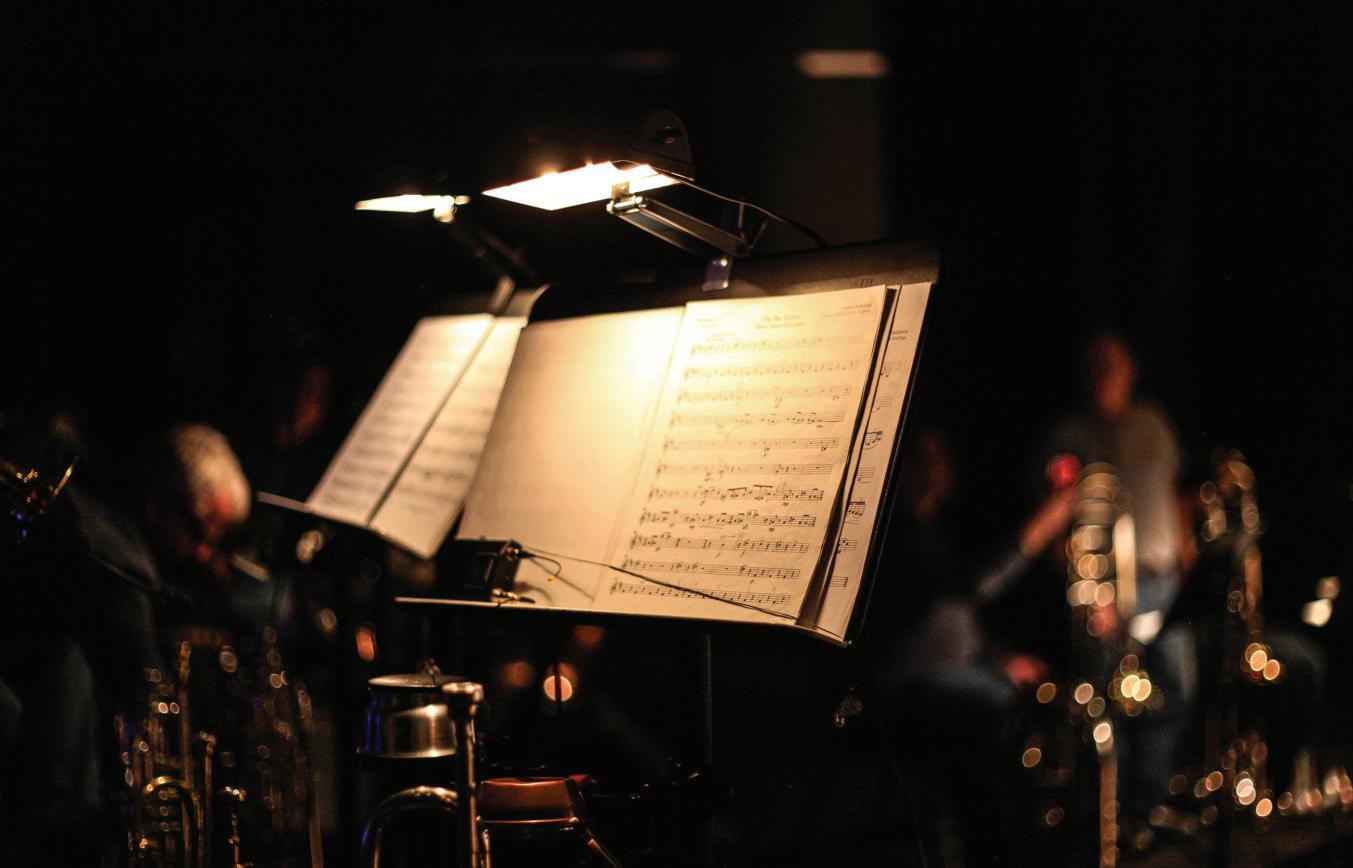

*Lubbock Youth Orchestras and Lubbock Symphony Education Sponsors
($25,000+)
City Bank
The United Family
($15,000-$24,999)
Covenant Health Systems
FirstBank & Trust
($7,500 – $14,999)
Armstrong MechanicalBeth and Chris Carpenter
*Double T SmilesDrs. Nadene and Roger Tipton
Hill & Ioppolo Oral & Dental Implant
Surgery of LubbockLory and Dr. Robert Ioppolo
MWM Architects
Overton Hotel & Conference Center
($5,000 – $7,499)
Chappell, Lanehart & Stangl P.C.
Friends of Trout Fishing in America
Tiva Kasemsri
Lowry Schaub
Scott Spore
Roger Tipton
Thomas Windisch
John Zias
*Western Bank
Visual Edge IT
($3,500 – $4,999)
Grey Hare Analytics, Inc.
MTS Kimbell
($1,500 – $3,499)
Alan Henry InsuranceRyan Henry and Alan Henry
Blue Layer
Chicken ExpressStacey and Robert Kollman
Evensky & Katz/Foldes Wealth
Management - Katie and John Salter
GRACO Real Estate Development, Inc.The Randy Andrews Family Office Wise Commercial Interiors
Prosperity Bank
Tricia and Dr. Peter Reed
Tucker Floral
($1,000 – $1,499)
Cathy and Dr. Scott Porter


Our Crescendo fund aims to AMPLIFY Lubbock’s performing arts culture by raising $500,000 to bring popular musical artists to perform alongside the Lubbock Symphony Orchestra.
$0
$500k Help us reach our goal of $500,000!
$107,000 raised so far
Help us bring the next big artist to Lubbock!

THANK YOU TO OUR CRESCENDO DONORS!
($10,000+)
Evan and Herb Armstrong
Nancy and Thomas Neal
Ralph Tamper and Don Shrum
($5,000 - $9,999)
Michael Epps
Don and Susan Maddox
Sharon and Rick Martin
Shanna and James St. Clair
Toni Wallingford
($1,000 - $4,999)
Pam and Rob Allison
Beth and Will Ashmore
Ruth Ann and Aubrey Bridges
Bobbe Crawford
Covar Dabezies
Stephen L. and Melissa A. Faulk
Patricia Lynn Freier
Birgit and Brad Green
Robbie Harbison
Sandy and Alan Henry
The Honorable and Mrs. Phil Johnson
Richard Jorgensen
Betsy and Thivakorn Kasemsri
Stacey and Robert Kollman
Grace and Robert Lin
Gwen and Tom Nichols
Sharmon and Keith Owens
Brenda and Curtis Parrish
Prosperity Bank
Dr. Wael and Hana Qubti
Tricia and Peter Reed
Judy and Paul Rostad
Mary and Roger Saathoff
Mary Jane and Tim Sampson
Tina and Tommy Sansom

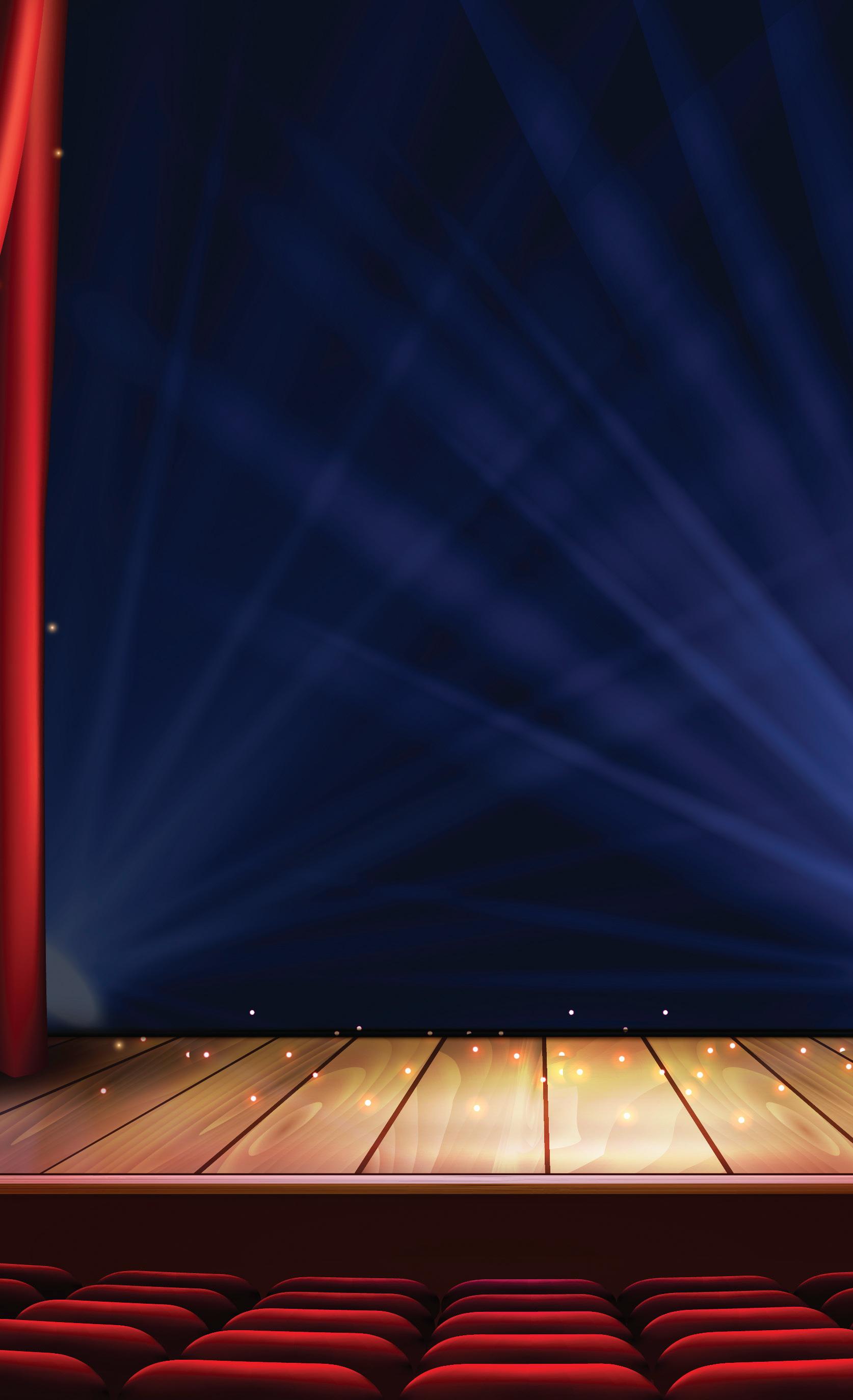


Mezzo Forte, continued
Debbie Sims
Jill and Fred Stangl
Pat and Charles Wheeler
Darya White
($20 - $999)
Trudy Gamble
Carol Giblin
Alena Ilyushyna
Amanda Kuhn
Kit and Ben Linton
James McNabb
Jill Nelson
Mary Parra
Kathrin Price
Cloyce Stetson and Janice Stachowiak
Ross Waggoner
Susan Wilson
For over 78 seasons, the Lubbock Symphony Orchestra has been a bridge between the world’s top performers and the heart of the Hub City. Whether it’s up-and-coming talent or seasoned professionals, we take pride in showcasing the rich musical culture of our region to the world. Now, it’s time to turn up the volume and make it clear that Lubbock is a destination not to be missed.
The meaning of CRESCENDO is a gradual increase. In 1963, the Lubbock Symphony introduced the legendary pianist Van Cliburn, who performed with our local orchestra. Similarly in 1993, the Lubbock Symphony garnered attention by hosting a series of concerts featuring pop singer Tony Bennett. Since then, the orchestra has had the privilege of hosting notable performers such as Yo-Yo Ma, Joshua Bell, Wynton Marsalis, Susan Graham, Renée Fleming, Boyz II Men, and Kristin Chenoweth. The Symphony has also paid tribute to renowned artists like Queen, The Beatles, Led Zeppelin, Wicked The Musical, and Aretha Franklin. These performances hold a special place in the hearts of many members of our community, as they are cherished memories. This is why we strive to keep creating unforgettable experiences that can be treasured by future generations.
Did you know that only one-third of our annual budget comes from ticket sales? The remaining funds mainly come from music supporters in the community, like yourself. Crescendo aims to AMPLIFY your support of our evolving mission to bring the most prominent names in music to the Hub City.
You can add your name today to the expanding list of benefactors, who are leaving their mark on the Hub City and building a legacy of performances for generations to come.
Please join us with your gift to Crescendo today!
The Lubbock Symphony Orchestra respectfully acknowledges donations received during the 2024-2025 Season in honor of the following:
Bess Haley In Honor Of Toni Wallingford
Evelyn Davies In Honor Of Toni Wallingford
The Randy Andrews Family In Honor Of David Cho
William Choe In Honor Of David Cho
Sue Sexton In Honor Of David Cho
Virginia Kellogg In Honor Of David Cho
Dean Kilmer In Honor Of David Cho
Rock Thoms In Honor Of David Cho
David J. Tobin In Honor Of David Cho
G3 In Honor of Stephen L. and Melissa A. Faulk
Michael Epps In Honor Of Stephen L. and Melissa A. Faulk
Robin and Don Walker In Honor Of Stephen L. and Melissa A. Faulk
Toni E. Wallingford In Honor Of Stephen L. and Melissa A. Faulk
Patricia and Charles Wheeler In Honor Of Stephen L. and Melissa A. Faulk
Twentieth Century Club In Honor Of Dr. Elissa Stroman
Jim Smith In Honor Of Donna Smith
In honor of Dawn Kelley & Marcus Borhani Musicians Support Endowment
James and Luann Beardemphl
Scott and Jessica Beardemphl
Crystal Borhani
Rahim and Martha Borhani
Tutti Burkett
David Cho
Bryan and Linda Dunn
Richard and Rebecca Gale
Larry and Susan Hess
Sheryl House
George R. Keeling Insurance
Doug Klepper and Terry Hawkins
Leslie Mihal
Allan Mackenzie and Carolyn Moore
Steve and Peggy Reinhart
Susan and Chris Seiter
Tom and Judy Spoonts
Priscilla Stennis
Cloyce Stetson and Janice Stachowiak
Lloyd and Betti Whetzel
Patricia and Charles Wheeler

Jo Anne M. Smith In Memory Of Norton Baker
Michael Epps In Memory Of Eva and Walter Beets
Thivakorn Kasemsri In Memory Of RADM Stephen K. Chadwick
Toni E. Wallingford In Memory Of Dickie and Fritz Epps
Martha Fregia In Memory Of Justin Fregia
Connie Goodwin In Memory Of Grace and Frank Goodwin
Allan MacKenzie In Memory Of Ruth Lauer
Peggy Dyess In Memory Of Audrey McCool
Carolyn Wooten In Memory Of Ricky Rasco
Suzanne Rasco In Memory Of Ricky Rasco
Jim Smith In Memory Of Donna Smith
Eric and Janis Blackwell In Memory of Dr. Roy Wilson
If you would like to honor an individual or organization important to you, please send your tax-deductible donation to the Lubbock Symphony Orchestra, 601 Avenue K; Lubbock, TX 79401.
The Lubbock Symphony Orchestra Endowment Trust
The CH Foundation Conductor’s Podium Endowment
Helen DeVitt Jones Endowment for Education
LSO Endowment for Musician Fees and Education
Shelley Hall Nelson Endowment for Musicians’ Salaries
Lubbock Symphony Opera Fund
Texas Tech University J.T. & Margaret Talkington College of Visual and Performing Arts, School of Music Performer Endowment
Jones-Saathoff Family Concertmaster Endowment
Diekemper Family Foundation Associate Concertmaster Endowment
Justice Phil and Carla Johnson Principal Second Violin Endowment
Mary M. Epps and Ralph E. Wallingford Principal Viola Endowment
Mary Francis Carter Principal Cello Endowment
Eugene and Covar Dabezies Principal Bass Endowment
Drs. Audrey and Barry McCool Principal Flute Endowment, in memory of the Crew of Columbia, STS-107
Lubbock Symphony Guild Principal Oboe Endowment
Janeen Drew Holmes English Horn Endowment
Christine Polvado and John Stockdale Principal Clarinet Endowment
Nancy and Tom Neal Principal Bassoon Endowment
Anthony and Helen Brittin Principal Horn Endowment
Stacey and Robert Kollman Family Principal Trumpet Endowment
Larry and Lucy Landusky Principal Trombone Endowment
Tim and Mary Jane Sampson Bass Trombone Endowment
Diekemper Family Foundation Principal Tuba Endowment
Lubbock Symphony Guild Timpani Endowment
Lisa Rogers/Alan Shinn Principal Percussion Endowment
Rachel Jean Armstrong Thomas Principal Harp Endowment
Edward R. and Jo Anne M. Smith Principal Piano Endowment
Dawn Kelley and Marcus Borhani Musicians Support Endowment
— Matshona Dhliwayo
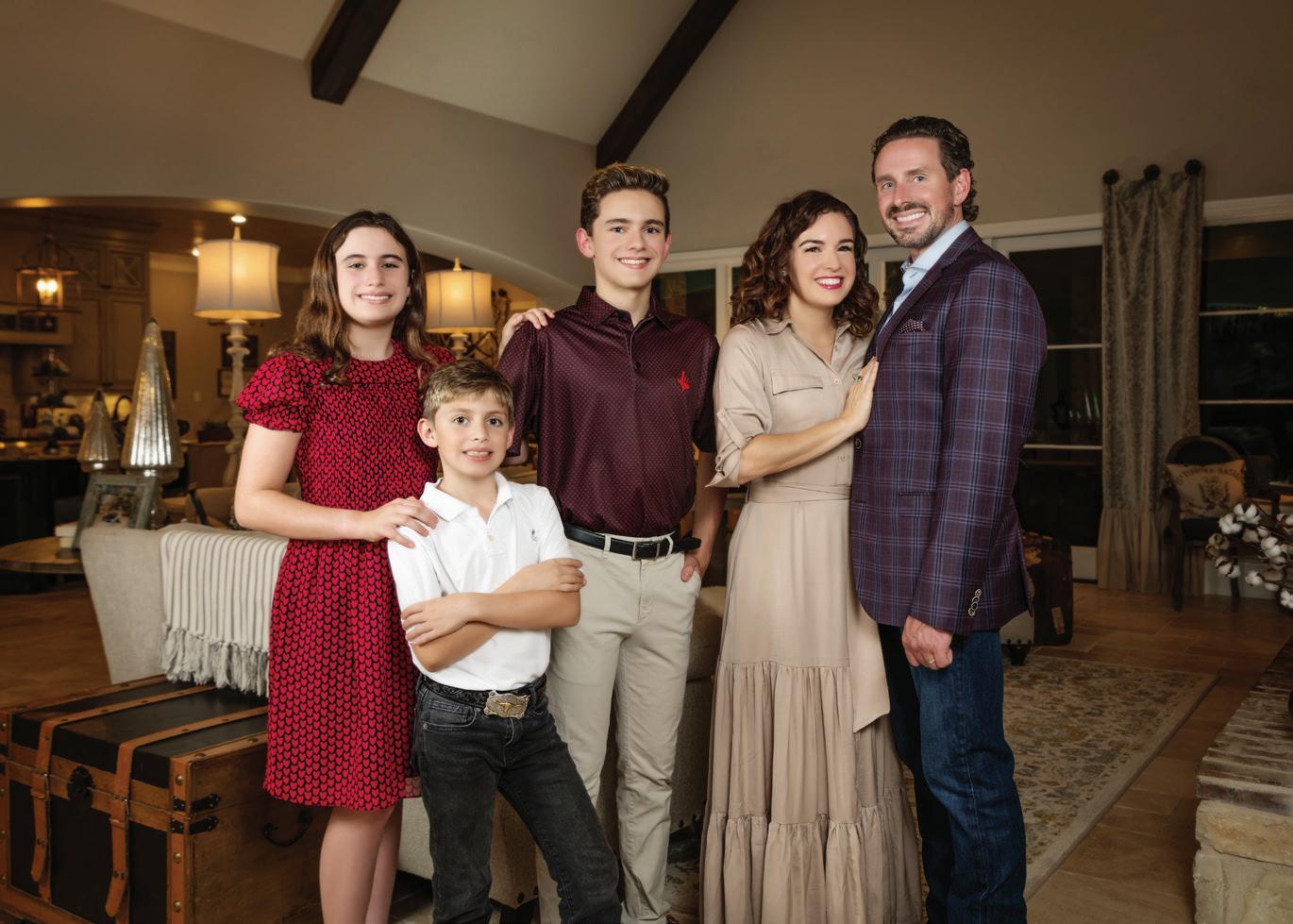


Your support enables the LSO to offer grand musical experiences, whether in concert with world-renowned guest artists or in classrooms sharing the wonder of music with students.
Below is a list of ways you can support your LSO:
Traditional Donation
Mail a check, payable to the Lubbock Symphony Orchestra, or make an online gift. See the QR Code below to make a gift.
Many businesses will match employees’ charitable gifts. A donation may be matched dollar-for-dollar or at a percentage. Check with your company to see if they participate in a matching program.
Beginning at age 70½, you may contribute up to $100,000 annually directly from your IRA to the LSO through a QCD and avoid the distribution as income.
You may contribute to the LSO through a donor-advised fund. The LSO can also be the beneficiary or successor advisor to your DAF.
Stock and Securities*
You can donate appreciated stocks and securities to the LSO, saving capital gains taxes while providing a deduction of the entire donation.
Remembering the LSO in wills and trusts helps ensure we continue creating quality symphonic performances and educational experiences.
*To ensure your gift meets proper tax requirements and to determine the best method of gifting for your unique situation, we recommend reviewing guidelines and discussing with your tax and/or financial advisor and legal professional for bequests and legacy gifts.
For additional information or questions, contact Courtney Jordan, Director of Development, at 806.642.5228 or courtney@lubbocksymphony.org
Lubbock Symphony Orchestra
601 Avenue K | Lubbock, TX 79401
EIN #75-6001993
The LSO is a 501c(3) nonprofit organization. SCAN QR CODE FOR MORE INFORMATION






Jack M. Lewis
W.P. Clement
Charles E. Maedgen, Jr.
Roy Bass
Rex Webster
Marion Key
W.R. Sewell
J.C. Reynold
James L. Quicksall, Jr.
Asher Thompson
Richard G. Richards
Jack Kastman
Joe J. Moise
J. Harmon Jenkins
George C. Miller
Lonnie Langston
John Witcomb
O.W. English
Asher Thompson
Troy Myers
Arthur E. Gamble
Charley Pope
C.B. Carter
Robert E. Norris
Dean James Allen
Robert L. Stripling
Charley Pope
John R. Kreiger
Roger Key
Edwin E. Merriman
Owen McWhorter, Jr.
Frank Newton
Frank Anderson
Kay Sanford
Paul Meyer
Robert L. Stripling
Jim Ratliff
Coffee Conner
Alan Henry
William D. Armstrong
Susan Boling
Curtis Griffith
DeWayne Pierce
Mike Cunningham
Margaret Lutherer
Chris Barnette
Catherine S. Porter
Ray Fargason
Emily Ratcliff
Brad Green
Peter G. Daia
Kirk McLaughlin
Harry Zimmerman
Shannon Taliaferro
Heather Hocker
Brian Willcutt

The Lubbock Symphony Orchestra would like to express gratitude to and










Market Street knows the art of creating lives in all of us and loves to support local arts and entertainment.

Toni Wallingford Chair
Jill Stangl
Chair Elect
Melissa A. Faulk
Treasurer
Terri Byrne Secretary
Brian Willcutt
Immediate Past Chair
Beth Ashmore
Steve Balch
Dustin Baucom
Gilbert Berdine
Leen Borno
Kasi Boutwell
Maureen Chadwick
David Cho
Covar Dabezies
Michael Epps
Stephen L. Faulk
Patricia Lynn Freier
Brad Green
Amy Grisham
Spencer Hartman
Sandy Henry
Bobbye Hrncirik
Leslie Huckabee
Carla Johnson
Tiva Kasemsri
Amanda Kuhn
Neil Kurtzman
Grace Lin
Paula Loveless
Brenda Parrish
Melissa Pridmore
Peter Reed
Carol Robertson
Stephanie Rogers
Katie Salter
Tim Sampson
Andrew Stetson
Nadene Tipton
Edson Way
Darya White
Joyce White
Lola Windisch
Galen Wixson
Galen Wixson
President & CEO
David Cho
Music Director
Eric Allen
Lubbock Chamber Orchestra
Artistic Director
Suzanne Rasco
Director of Accounting
Courtney Jordan
Director of Development
Kea Beasley
Director of Education
Molly Ramirez
Director of Marketing and Communications
Amelia Jamieson
Graphic Designer
Nia’ Threatt
Patron Services Coordinator
Gary Hudson
Personnel Manager
Corey Dolter
Operations Manager
Israel Mello
Librarian
Callie Watson
Marketing and Communications Assistant
Jamie Shipp Education Assistant

Welcome Patrons,
Thank you for attending tonight’s performance! We appreciate your support of the Lubbock Symphony Orchestra. The 2024-2025 season promises to be an outstanding year of symphonic performances. We are excited to experience the joy of music with you.
Tonight’s performance, and every performance since 1952, has been made possible in part by the Lubbock Symphony Guild. For 72 years, the Guild members have donated their time, talent and resources to keep symphonic music thriving in West Texas.
I hope that you enjoy the incredible talent of our remarkable Orchestra and value the educational and cultural contributions they provide to our community. I invite you to consider becoming a member of the Lubbock Symphony Guild, to join us in further supporting the efforts of the LSO. For more information, please visit our website at www.lubbocksymphonyguild.com.



Front Row Left to Right - Anastyn Greaser, Mia Chacon, Bryleigh Norman, Hannah Pharies, Ella Mendez, Emily Roark, Rylan Bryant, London Carlisle, lndie Williams, Ella Bennett, Viviana Ziegner, Olivia Mudd
2nd Row Left to Right - Lauren Casey, Anne Edwards, Susannah Smith, Ella Murphree, Sadie Callison, Camden McDougal, Maya AI-Hmoud, Lydia Pesterfield, Reece Watson, Raegan Reed, Jayci Lentz, Olivia Elliott, Tierni Green ,Aubrey White, Teema Sharif
3rd Row Left to Right - Riley Newberry, Zimri Buckley, Kamryn Chandler, Jencee Thompson, Elizabeth Johnson, Blair Belew, Emory McCain, Gabrielle Scherpereel, Morgan Parker, Sydney Smothers, Remington King, Rylee Bea Rose, Cora Clifford
Back Row Left to Right - Reece Riddle, Addison Kitten, Maya Malouf Vermillion, Raegan Lee, Bella Lampe, Hannah Harvey, Emily White, Madelyn Caswell, Ashlee Jones, Brentley Preston, Camryn Howe, Kristen Mitchell
Not Pictured - Catherine Ancell, Grace Gerwig, Taylor Harrison, Ashlyn Simek




Front Row Left to Right - Halley Reynolds, Elizabeth Nicholson, Ava Smith, Finnley Forero, Landry Allen, Joy Wischmeyer, Ellie Underwood, Katelyn Bollens, Madison Heider, Elly Norris, Campbell Beeler
2nd Row Left to Right - Chayce Johnson, EllaMaria Webb, Ashlyn Edwards, Kennedy Cowan, Emyrson Parrott, Blakeley Martin, Chayce Welborn, Payton Reed, Alice Everett, McKanna Garcia, Lauren King, Sadie Gillespie, Addison Neufeld
3rd Row Left to Right - Katelyn Glenn, London Bird, Meridith Bradley, Cassidy McKinnon, Natalie Sweat, Emery Fox, Campbell Franklin, Baylee Fillingim, Joleigh Reno, Danelle Mccourt
Back Row Left to Right - Emma Lane, Erin Brodbeck, Kathleen St. Clair, Harper Burrell, Georgia Kitten, Talitha Dalton, Addison Stewart, Adelaide Underwood, Angelia Liu
Not Pictured - Reya Felton, Heidi Helderlein, Sofia Martinez, Sarah Simpson, Brynlee Smith
LSG Board Meeting, Lubbock Women’s Club
Thursday, September 5, 2024
Senior Deb Meeting, Lubbock Women’s Club
Sunday, September 29, 2024
LSG Board Meeting, Lubbock Women’s Club
Thursday, October 3, 2024
LSG Board Meeting, Lubbock Women’s Club
Thursday, November 7, 2024
LSG Membership Meeting and Holiday Social
Thursday, December 5, 2024
LSG Board Meeting, Lubbock Women’s Club
Thursday, January 2, 2025
Debutante Presentation Tea, Lubbock Country Club
Sunday, January 26, 2025


Front Row Left to Right - Elizabeth Williams, Sage Boyle, Marlee Thompson, Kate Harlien, Abbott Spitzer, Lula Biondi, Ellison Roberts, Campbell Wilson, Elizabeth Thane, Hannah Owen, Sophie Scolaro
2nd Row Left to Right - Presley Taylor, Kaylee Jordan, Riverson Sawyer, Kristine Wischmeyer, Carter Piland, Emersyn Cross, Kayci Cave, Kayleigh Lewis, Shelby Rivas
3rd Row Left to Right - Finley Cross, Sophie Carter, Rynn Riddle, Sarah Poe, Aubry Elrod, Alexis Gregory, Kaylee McKee, Lauren Brashear, Isabella Hernandez
Back Row Left to Right - Lola Latham, Hadley Payne, Ashlyn Neufeld, Addison Evans, Pamela Buckley, Hope Stonestreet, Kaelie Fincher
Not Pictured - Emily Aldinger, Elle Condra, Anzley Proffitt
Debutante Presentation and Winter Ball, Lubbock Memorial Civic Center
Saturday, February 1, 2025
LSG Board Meeting, Lubbock Women’s Club
Thursday, March 6, 2025
LSG Board Meeting, Lubbock Women’s Club
Thursday, April 3, 2025
LSG Membership Meeting and Annual Brunch
Thursday, May 1, 2025













